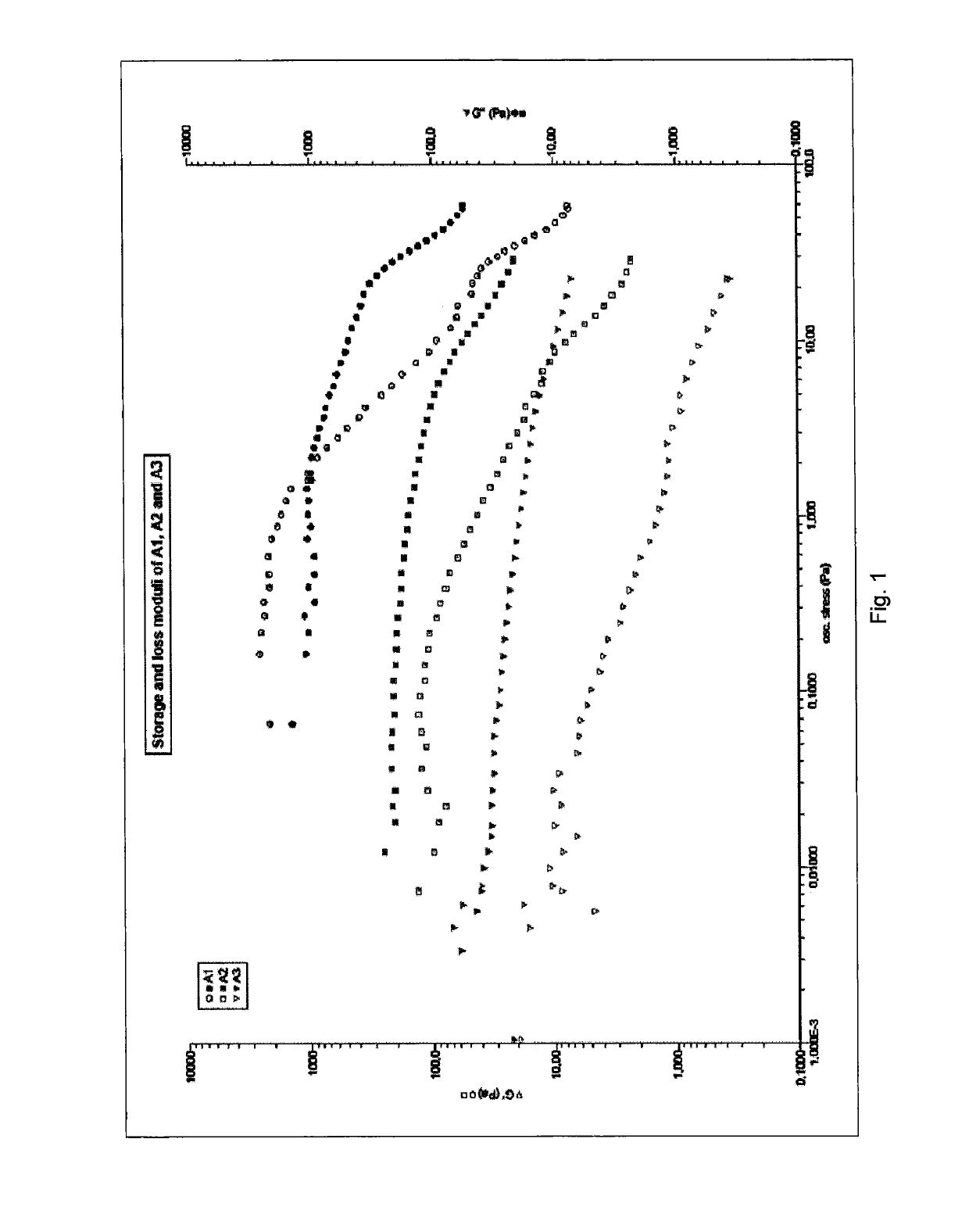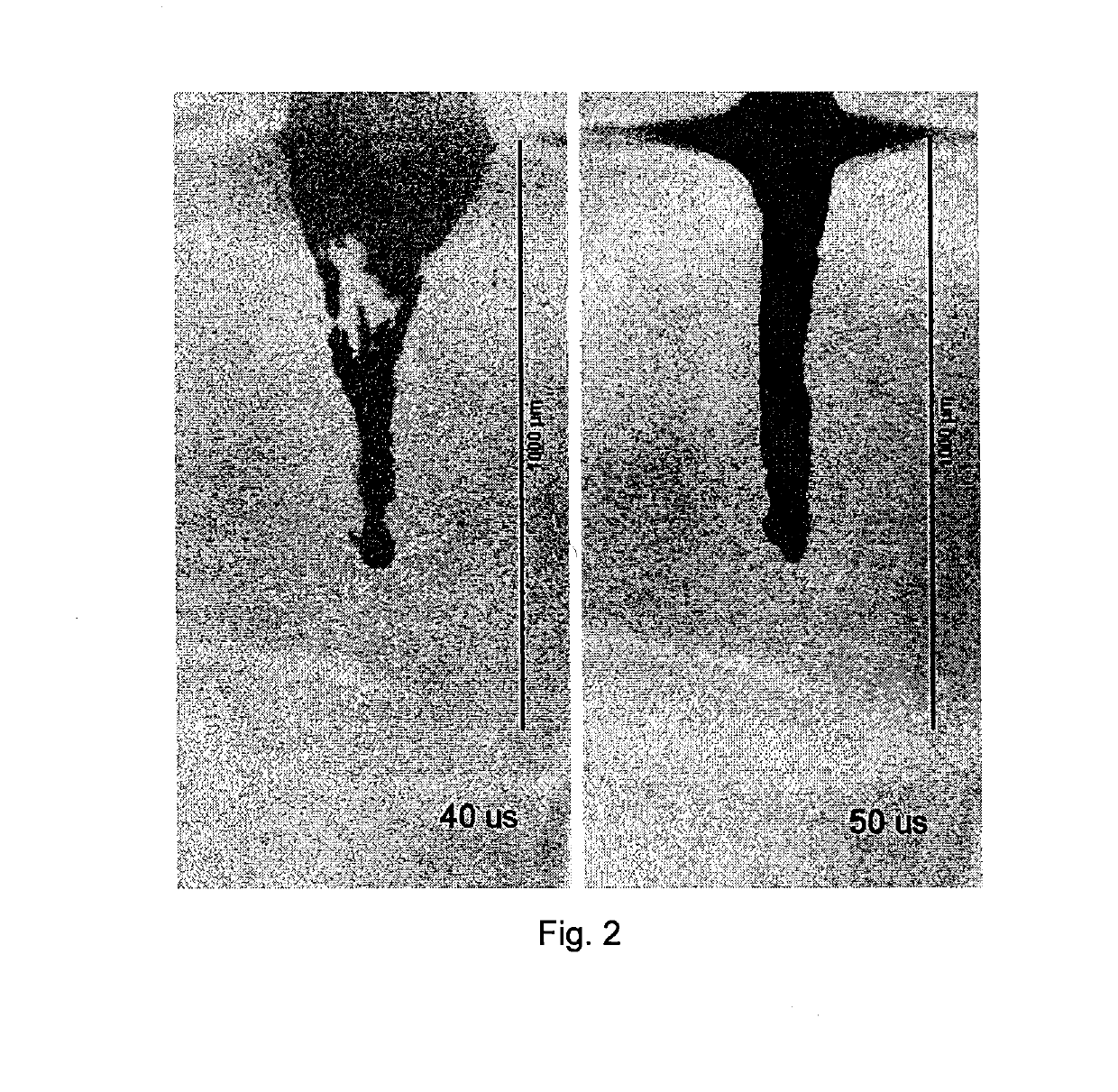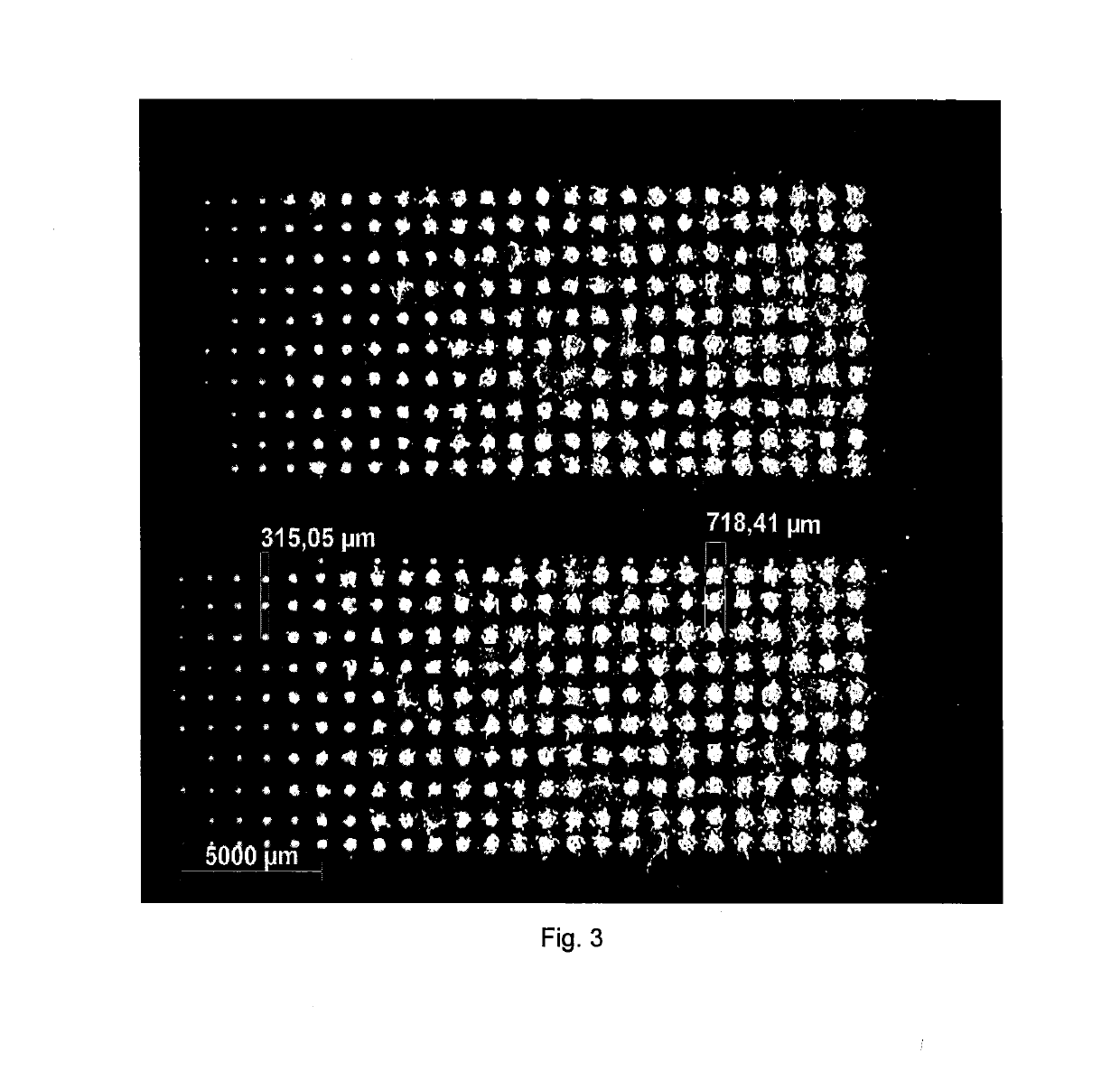Composition Suitable for Application with Laser Induced Forward Transfer (LIFT)
a technology of forward transfer and laser, applied in the direction of application, ink, vacuum evaporation coating, etc., can solve the problems of affecting the process speed, the volume and/or dot size of the currently used dispense technology, and the challenge of downsizing components such as microelectromechanical systems (mems)
- Summary
- Abstract
- Description
- Claims
- Application Information
AI Technical Summary
Benefits of technology
Problems solved by technology
Method used
Image
Examples
example 1
[0062]Composition A3 and composition B had a differed viscosity. Detailed compositions are listed in the table 1. The viscosity of composition B was lowered by addition of an organic solvent. Testing showed that the composition B was not applicable with LIFT (illustrated in FIG. 3), whereas lower viscosity composition A3 was applicable with LIFT. FIG. 4 illustrates this effect. Explosion of a material was observed during LIFT process as can be seen on the left side of the FIG. 4 when the composition having a high viscosity (composition B) was used in LIFT process. A jet was formed, as can be seen on the right side of the FIG. 4, for the composition having a suitable viscosity (composition A3).
TABLE 1CompositionCompositionComponentA3BLinear bifunctional epoxy8.068.06Bis F epoxy12.1012.10Seikacure S (amine hardener)2.522.52Micron sized silver flake77.1277.12Epoxy silane compound0.200.20Organic solvent bp. (213-218° C.)15.000.00Viscosity (Pas)1.011.1Crossover of G′ and G″NoYesApplicabl...
example 2
[0063]Composition C and composition D had a differed reactive diluent used in the composition, more specifically, boiling point of the reactive diluent was different. Detailed compositions are listed in table 2. Testing showed that the composition C was not applicable with LIFT, whereas composition D was applicable with LIFT. FIG. 5 illustrates this effect. Explosion of the material was observed during LIFT process using the composition comprising low boiling point reactive diluent (composition C), as can be seen on the left side of the FIG. 5. Whereas, the composition comprising a high boiling point reactive diluent (composition D), a jet was formed as can be seen on the right side of the FIG. 5.
TABLE 2CompositionCompositionComponentCDLinear bifunctional epoxy8.068.06Bis F epoxy12.1012.10Seikacure S (amine hardener)2.522.52Micron sized silver flake77.1277.12Epoxy silane compound0.200.20Epoxy diluent 1 (BP 124° C.)8.000.00Epoxy diluent 2 (BP > 250° C.)0.008.00Viscosity (Pas)1.92.0Cr...
example 3
[0064]Composition A1 and composition E had a differed quantity of the solvent used in the composition. Detailed compositions are listed in table 3. Testing showed that the composition A1 was not applicable with LIFT, whereas composition E was applicable with LIFT. FIG. 6 illustrates this effect. Explosion of the material was observed during LIFT process using the composition comprising lower quantity of the solvent (composition A1), as can be seen on the left side of the FIG. 6. Whereas, the composition comprising a higher quantity of the solvent (composition E), a jet was formed as can be seen on the right side of the FIG. 6.
TABLE 3CompositionCompositionComponentA1ELinear bifunctional epoxy8.068.06Bis F epoxy12.1012.10Seikacure S (amine hardener)2.522.52Micron sized silver flake77.1277.12Epoxy silane compound0.200.20Organic solvent bp. (213-218° C.)2.008.00Viscosity (Pas)7.02.6Crossover of G′ and G″YesNoApplicable with LIFTNoYes
PUM
| Property | Measurement | Unit |
|---|---|---|
| boiling point | aaaaa | aaaaa |
| boiling point | aaaaa | aaaaa |
| size | aaaaa | aaaaa |
Abstract
Description
Claims
Application Information
 Login to View More
Login to View More - R&D
- Intellectual Property
- Life Sciences
- Materials
- Tech Scout
- Unparalleled Data Quality
- Higher Quality Content
- 60% Fewer Hallucinations
Browse by: Latest US Patents, China's latest patents, Technical Efficacy Thesaurus, Application Domain, Technology Topic, Popular Technical Reports.
© 2025 PatSnap. All rights reserved.Legal|Privacy policy|Modern Slavery Act Transparency Statement|Sitemap|About US| Contact US: help@patsnap.com



